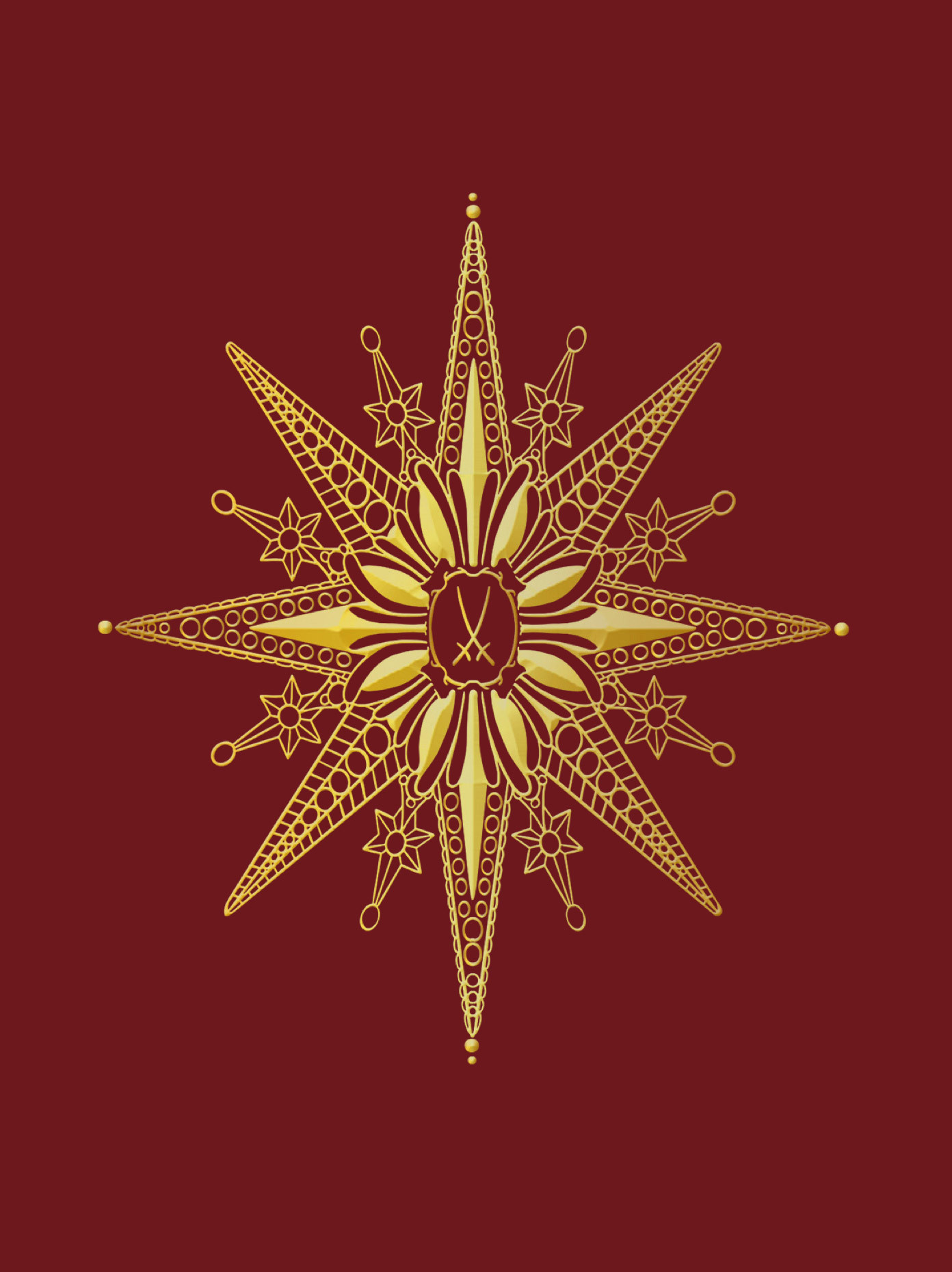Shop now & win! Discover unique porcelain with a 20% price advantage and take part in our exclusive raffle!

The history of the Christmas star
#MEISSENchristmasstar
#MEISSENchristmasstar
-
 It was a dark night when the silent symphony of the firmament was conducted by a radiant star - a poetry that gripped the hearts of three wise men and seemed to fulfill the prophecy of the birth of a young king. In search of that birthplace, the wise men wandered through the deserts and lost their way in the shadows of their own expectations. Suddenly, in the midst of the darkness, a star rose again, not only in the sky, but also in the souls of the seekers - it was the Star of Bethlehem. Its light, a heavenly guidance, directed their steps through mysterious paths of the night. With gifts wrapped in golden hope, they approached the place where the child of promise rested. In reverent adoration, they bowed before the newborn king - and the other stars shone in applauding silence.
It was a dark night when the silent symphony of the firmament was conducted by a radiant star - a poetry that gripped the hearts of three wise men and seemed to fulfill the prophecy of the birth of a young king. In search of that birthplace, the wise men wandered through the deserts and lost their way in the shadows of their own expectations. Suddenly, in the midst of the darkness, a star rose again, not only in the sky, but also in the souls of the seekers - it was the Star of Bethlehem. Its light, a heavenly guidance, directed their steps through mysterious paths of the night. With gifts wrapped in golden hope, they approached the place where the child of promise rested. In reverent adoration, they bowed before the newborn king - and the other stars shone in applauding silence.
This is how it is said to have happened back then. Today, the Star of Bethlehem is a popular symbol during the festive season as the Advent Star or Christmas Star and symbolizes hope and belief in a meaningful arrival. The debate about the reality of the groundbreaking star continues to this day. It is a question that not only concerns the theological sphere, but also challenges the astronomical world. Was the star an actual astronomical phenomenon or rather a metaphorical representation intended to convey a deeper meaning?
Different theories and hypotheses surround the nature of this star. Some scientists speculate that it could be a particularly bright comet or a supernova, both events could have appeared as conspicuous light phenomena in the sky. However, researchers such as Johannes Kepler have also suggested that the Star of Bethlehem may have been caused by a special planetary conjunction - a rare moment when two or more planets are close together in the sky. These different theories underline the fascination and enduring mystique surrounding the phenomenon of the Star of Bethlehem.
“The glitter and glow bring the memories of long ago.“
-
 Nowadays, it is hard to imagine Christmas without the Christmas star as a decorative element. Especially at the top of the Christmas tree, it reminds us of the shining heavenly sign that once guided the three wise men on their way to the crib. At the same time, it shines as a glittering ornament and forms the highlight of the festive tree decoration. Its presence lends the entire tree an aura of hope, light and the meaning of Christmas.
Nowadays, it is hard to imagine Christmas without the Christmas star as a decorative element. Especially at the top of the Christmas tree, it reminds us of the shining heavenly sign that once guided the three wise men on their way to the crib. At the same time, it shines as a glittering ornament and forms the highlight of the festive tree decoration. Its presence lends the entire tree an aura of hope, light and the meaning of Christmas.
Due to its great significance for the Christmas season, we have given the radiant signpost in MEISSEN a very special place in our festive collection this year. And so the MEISSEN Christmas star shines, in breathtaking detail and with precious gold on the finest porcelain - surrounded by blue plant splendor on pure white or golden branches on a red background. Whether as a vide-poche to store your little festive miracles, on our iconic mugs for wonderful festive moments of enjoyment during the holidays or on Christmas baubles that enchant the fir greenery in a unique way - the MEISSEN Christmas star adorns our collection and gives every piece a radiant aura.

Products
- 06
- 07
- 08
- 09
- 10
- 01
- 02
- 03
- 04
- 05
- 06
- 07
- 08
- 09
- 10
- 01
- 02
- 03
- 04
- 05
- 06
- 07
- 08
- 09
- 10
-
 MEISSEN CHRISTMAS STORIESMagical stories and customs around Christmas - Join us for a look into the living rooms of the world.
MEISSEN CHRISTMAS STORIESMagical stories and customs around Christmas - Join us for a look into the living rooms of the world. -
 A CHRISTMAS SYMPHONY FOR YOUR FESTIVE TABLEMEISSEN invites you to dinner. Discover our table services ROYAL BLOSSOM and NOBLE BLUE for your festive Christmas table!
A CHRISTMAS SYMPHONY FOR YOUR FESTIVE TABLEMEISSEN invites you to dinner. Discover our table services ROYAL BLOSSOM and NOBLE BLUE for your festive Christmas table! -
 CHRISTMAS COLLECTION 2022The Winged Lioness - The dynamics and power of the Winged Lioness fascinated the designers of the porcelain manufactory so much that an adaptation of the proud animal found its way into our Christmas collection this year.
CHRISTMAS COLLECTION 2022The Winged Lioness - The dynamics and power of the Winged Lioness fascinated the designers of the porcelain manufactory so much that an adaptation of the proud animal found its way into our Christmas collection this year.
X
Subscribe to the newsletter
Get 10% discount* on your next online order
Meissen stores
near you
Contact us
Do you have questions about the manufactory, our product range or special designs - we are happy to advise you!
Consultation hours:
Mon-Fri: 9am - 6pm
Sat: 10am - 4pm











